
Last Thursday morning, I and several other journalists attended a very special event. It’s been 100 years since the founding of the Disney Corporation, and they have something to celebrate with. That morning, Jennifer Lee, Chris Buck, and many more offered insight into a couple of treats the animation studio has in store. First, we witnessed something even my occasionally cold heart couldn’t resist. And that is the inventive and entertaining short, Once Upon a Studio, written and directed by the talented Dan Abraham and Trent Correy.
Once Upon a Studio uniquely celebrates 100 years of animation. It brings to life 543 characters from the past. Whether it’s Cinderella, Mickey Mouse, Belle, Elsa, and her sister, they are all here. It takes place as the employees at the Walt Disney Animation Studio in Burbank all leave for the evening. Once the last two employees say their goodbyes, the studio magically comes to life as all the characters from the past decide it’s time to celebrate the one-hundred-year milestone themselves. Trust me when I say if you are even remotely a fan of any Disney animation, this will give you the feels big time.
For the next presentation, the theme of celebrating 100 years of Disney was ever present with their upcoming animated feature. Wish offers a script by Jennifer Lee, Allison Moore, and Chris Buck – who shares directing duties with Fawn Veerasunthorn. The story revolves around Asha (Ariana DeBose), a young woman in the magical kingdom of Rosas. And yes, she has a villain to contend with, and that fellow would be the keeper of wishes, Magnifico (Chris Pine). During the presentation, they presented us with over a half hour of the November 22, 2023 release.
Check out the new trailer:
As a fan of Lee and Buck’s work with Frozen, I enjoyed what I witnessed. The musical numbers by Grammy-nominated Julia Michaels hit the right notes. As for the cast, Chris Pine and Ariana DeBose are enjoyable together, and she makes for an appealing modern Disney heroine. And if you are looking for a little more nostalgia after the charming Once Upon a Studio, Wish has you covered. The animated feature happily offers a few lovely moments referencing 100 years of animation. If you’ve ever wondered why all the animals talk in Disney movies, Wish may answer that question.
After revealing Once Upon a Studio and Wish, the filmmakers sat down for a brief question and answer session with those in attendance. First up, Dan Abraham and Trent Correy opened up about their ambitious project. And just how it all came about.

With so many of Disney’s characters, were there any that you wanted to use and had to cut?
TRENT CORREY: That’s a great question. We knew from the get-go we wanted to represent everything from Snow White to the upcoming Wish in shorts in between, so we had a lot to choose from. And I think the first pass might’ve been about 12 or 13 minutes.
DAN ABRAHAM: Yeah. When Jennifer Lee said we need to make this, then Trent and I, we threw every idea we had into a big thing, and we edited it all together. We knew we were gonna have to cut some stuff, so we were hoping that the best things kind of rose to the top and stayed on the screen. But yeah, there are little moments. There are so many characters and there are so many situations and mashups and different things that you can do.
DAN: I mean, it’s endless. So, yeah, some stuff ended up on the cutting room floor that’s like, someday, I hope we do a little something with them. Or I don’t know. Right next to her, right? Yeah?
What was cut out?
DAN: Do we say or do we, like, hold off for, like, if other things happen?
TRENT: You know what? Yeah, I don’t think we wanna spoil what was cut out, but we did manage to represent all the characters in there at some point, whether in the background or a main gig.
Did you utilize, you know, some type of AI to recreate their voice, or did you have other people dub, you know, do the soundalike thing? And how easy was it to access those 40 that you did get?
TRENT: There was no AI in the making of this short. [laughs]
DAN: Never even thought of that.
TRENT: Yeah, truly, we were so lucky that everyone we reached out to that’s still with us came back. And then we wanted to infuse the short with some of the nostalgic voices.
DAN: And you know, some of the folks have passed on, right? So, we got our best soundalikes that we possibly could, and Trent and I were so persnickety about making them sound —
DAN: We were. We were. ‘Cause we realized you only get seconds with each character.
DAN: So, they needed to look and sound exactly how you remember them. And that was very, very important to us. There were a couple of moments. Like, I really wanted Cliff Edwards for Jiminy Cricket at the end. I didn’t want to get a soundalike. So, they had to strip away the music from his original recording digitally. Some scientist masterminds were able to figure that out.
DAN: And yeah, so we got Cliff Edwards in there, which was important to us.
TRENT: And the thinking behind that was sometimes you only have three seconds with these characters, so they need to look, feel, and sound exactly how you remember them, so it brings you back to that moment.

Were there any images from any of the original character work used?
TRENT: Yeah, the animation is a hundred percent all new. So, even the ones, like the Dalmatians sitting in front of the TV, that’s made to look like it’s from the Dalmatians. In fact, that whole time period, the ’60s, we went to a lot of effort, our cleanup team and animation team, to make sure it had that Xerox, kind of sketchy qualities.
TRENT: The Jungle Book characters it’s all new, but it’s made to look like it’s of that era.
DAN: Yeah, and because the characters go by so quickly, there was some, like Peter Pan saying, “Come on, everybody, here we go,” we wanted Bobby Driscoll to get that exact same recording, so we pulled that from Peter Pan. There were certain moments that we wanted to be audio cues, audio, nostalgic cues, as well as the visual ones.
TRENT: It’s a tough word.
DAN: For the Dalmatians and Winnie the Pooh when he gets bounced by Tigger and stuff. Like, you know, the animator, even though it’s new animation, they studied the old thing because we wanted it to harken back to the original, to take you kinda back to when you saw it the first time.
TRENT: And that went for the score, as well. It is a full, new recorded score by Dave Metzger. But you know, like the Peter Pan example. That is meant to call back to the original film.
DAN: I don’t know how we picked.
TRENT: Right there.
Seeing all these characters together is breathtaking. But what do you think in these hundred years, what is the magic? How do you explain the magic of Disney? In one sentence.
TRENT: In one sentence. You know, I’m gonna throw this. This may answer that a little bit, but at the beginning when we see Burny Mattinson walking out with young intern, the purpose of that shot is to show that there’s a tradition at Disney to pass the torch from generation to generation.
TRENT: And we knew making this short that we’re standing on the shoulders of greatness for the last hundred years. Everything from the Nine Old Men to Mary Blair and all the past movies. So, that shot was just meant to be Burny passing the torch to the next generation, celebrating the past and the legacy and looking towards the future with this and films like Wish.
DAN: So many of these moments just come hitting you right back from childhood. When we would have a new person roll onto the crew, and so many people at the Disney studio were coming up to us and saying, “I have to be part of this. I have to be part of this.”
DAN: And then when they would come onto the crew, we would ask, “Okay, so say your name and what department you’re gonna be in and who your favorite Disney character is.” And nine times out of 10, that story of that Disney character had something to do with Grandma. And it had something to do with this childhood, core memory. And they would get emotional, these grown adults. Everyone was so passionate and dedicated. And I think that these characters are our friends and they’re our family. They’re who we grew up with. And so, it’s nice to see them again.

It was clear that both Dan and Trent had a deep knowledge about the 100-year-history of Disney, but the conversation continued with Chris Buck, Jennifer Lee, Fawn Veerasunthorn, Juan Pablo Reyes Lancaster-Jones, and Peter Del Vecho as they discussed the upcoming release, Wish.
What are the advantages of waiting 15 years to make this film, so to speak, that technology has afforded you to do that we can witness in this?
CHRIS BUCK: Well, it’s the technology that we’ve been doing throughout. A lot of our shorts, we push some of the technological boundaries. And we’ve been doing things where you do incorporate a bit of the hand-drawn into some of the shorts that we’ve done. You get a little bit of line around the character, but sometimes the characters are still animated in CG. But again, it’s starting to do what we’ve also been loving to do, and that is sort of embracing our legacy, along with moving towards the future. So, I think it’s that hand-drawn look, and computer. It is very hard to describe. I can barely describe it myself. I won’t even try, ’cause I’ll mess it up. But we have a lot of really amazing artists and technicians that push us, you know?
We asked them, could we come up with a look that would embrace, you know, all of these things. And they were up to it. They were up to the challenge. But really, it happens every year, every movie. We keep pushing the boundaries a little bit more, and seeing the new things that we can do.
JENNIFER LEE: And just to say, I think one of the goals of a lot of our artists at this studio, and when we develop these films, we develop them with the most beautiful paintings by incredible artists. And then when you would transfer it to CG, there would be a shift.
And then in the past, when you would also do it in hand-drawn, there would be limitations. So, one of the goals has been, again, not how do we keep making CG more real, ’cause people can do that. How do we actually get the artist’s vision from the beginning, from that first painting? And I said, like, Lisa Keene, who’s one of the production designers on this, her paintings, I wrote to them in Frozen and I wrote to them in Wish. And how do we do that? And so, with fighting through the technology and I mean, getting some of the linework back in, it’s tied to that watercolor.
This achievement has meant a lot to us because it’s getting their vision, actually finally having technology and artistry meet in a way that they’re seeing eye to eye, instead of having to compromise. And I think it’s part of why it’s been so hard, because it’s not just about, oh, we can add this and add this. It’s about what’s the end result we want? And it’s that sense of art.
GRAY: What were y’all thinking when you created Magnifico? Were there any Disney villains or any real-world figures that y’all drew from?
JENNIFER: You know, what’s interesting is we talked at length. First, we started with what do we think about for villains that we’d love to do, ’cause how do we be different from the previous films, but also a nod to them. And it really is about getting to watch that journey. So, we knew we wanted to start where you get to watch him make choices where you might meet the best of him, and then hopefully, survive the worst of him.
And so that was there. And Julia Michaels was instrumental because this is the thanks I get as an idea, which, hilariously, is a nod to all moms put up with in the house. We talked a lot about, for her, that she hooked on the idea of a narcissist. So, it comes really simple, down to character and the deliciousness and danger of that. [laughs] And so, for me, when I write, that’s how I had to process is, was from inside out. And the person, the charm of that, that, when tested, people make different choices when tested.
And so, the playground always comes from character. I think people see different things in it and different societies in it, but that’s just because that’s how we live and who we are. So, we’re really trying to not do one. We’re not. And actually, you’ll see the queen make very different choices from him. I won’t give those away. But it’s really just about what we kept coming back to is, at the core of the person, who’s the most vulnerable in some ways to these things? And Julia was instrumental in that. But boy, that was so fun to do [laughs] once we started building it.
When it came to influence on classic Disney characters, how much of that went into the characters in Wish?
CHRIS: I mean, we will say, there are so many nods in this movie to our legacy. They are all over it. And some people are finding nods that we didn’t even intentionally put in. But they’re like, “Well, there’s that. There’s the wishing well. There’s that.”
FAWN VEERASUNTHORN: Maybe subconsciously, we were going there.
CHRIS: Yeah. I think, you know, the thing is, Disney’s so much in our DNA that, you know, I think it just comes out.
And every different department would put little moments in there or characters or something in the background that will be nods to that legacy. When it comes to the character, I think, you know, it’s just who we are. We grew up on Disney characters. And we try to do something original, but we also, you know, we love what we grew up with. We love all those classic movies. So, we try to embrace those types of characters, too.
Can you talk about the technology component of making what looks like hand-drawn backgrounds have this computer-generated depth? And also, specifically, because Pinocchio was your starting point, the Pinocchio shot that we saw earlier.
CHRIS: Well, so I’ll keep it brief. Pinocchio just meant everything to me when I was a kid.
I don’t even know, again, like I was saying, so much is DNA in me. And I saw that when I was, I think, four of five years old. So, so much of that world means a lot to me, the characters, too. There was a richness and a depth to that movie. There was humor. There was also darkness, you know? What I think Walt did so beautifully was balanced, you know? Life has those scary moments, you know?
And so, anyway. That’s one of the things about Pinocchio, I think, that I love. But you’re asking more a technology question. Deep canvas was, many of you don’t know, deep canvas was a way of us, in Tarzan, we had painted backgrounds. It was all a hand-drawn movie. But we wanted to make the jungle look like it was painted. So, we had to create the trees in the computer. And yet, we had to have them painted. It had to look like it was paint strokes on the trees.
So, that was extremely difficult to do, but again, we were pushing the technology. And that all came from us saying, “Gosh, it would be great to see Tarzan really moving around the jungle?” And not be limited like all the live-action Tarzan movies, where basically he just swings across the frame pretty flat, right? Well, this, Tarzan’s, you know, moving all around, thanks to the incredible Glen Keane doing the beautiful animation of, you know, surfing through the trees and all that. So, but it started there.
Again, I am not the technical expert to explain all of that to you. I wish I could retain all that.
FAWN: And what I love was it brings our CG artists and 2D artists together. Because, you know, animators will call and ask for advice about how do you put the lines on the face of a character to accentuate the emotion, and they studied that. The effects crew went to the animation research library where you have seen some of the artwork today. And they study how the effects, the graphic shapes of it was translated into our CG process.
And the artists have expressed that this is a wonderful thing that it brought them together, that there’s no longer a boundary between 2D and CG.
JENNIFER: There are two people right in there. [laughs] Oh, and then, one second. I forgot, he’s got [indiscernible]. So, yeah, I’m not good at stuff [like that?

Where did the physicality come from for the character of Asha? How much of it came from Ariana DeBose?
CHRIS: Yeah, we can all answer that. Uh, a lot. She’s very, very active within the booth. Sometimes maybe a little too much, because the sound engineer is like, “Ariana, can you move back on the mic a little bit?” But you know, she’s acting it all out. And yes, we record all of it. The animators, all the way down to the mouth shapes, eye shapes, anything that she’s done. She’s so expressive and she’s so much fun to work with.
She gives you a lot of, you know, a lot of takes. And Jen and Allison write an incredible script and our actors do play. They’re able to play with that, too. So, she takes it and makes it her own. And I think what’s fascinating, too, is Jen is always done this. It’s so great about this is that she’ll listen to, like, the first record, you know, or watch it, whatever. And then she’ll go, oh, okay. So, that’s Ariana. Or, that’s Ariana as Asha.
And then Jen knows how to write for Asha. So, it evolves as the process goes. Bringing in the actors, the beginning, and then it just keeps getting better and better.
JENNIFER: And I think what’s so great about Ariana, as you all know, I mean, she’s sort of risen to great attention for her talent. Her talent’s always been there very quickly. And there’s a vulnerability feel when you come in as a dreamer, and then you suddenly have all of this. And she navigates it beautifully.
But that vulnerability, and we have a character rising from just a young teen with very present dreams being challenged and having to rise to that at a level she didn’t know if she had inside her. And Ariana was so fantastic to be honest and open and warm but vulnerable about that. And so, we always do that with all the characters. We connect with the actor at a level that’s so true in their heart, and then it helps to hear. You hear how they would say it, what would matter to them. It’s always a critical part of our process.
JUAN PABLO REYES LANCASTER-JONES: And Ariana also came into the studio to talk to the animators. And she sat with them, and I was there in the audience. And so, it was really cool to see her interaction. She is just so unique and she’s unafraid of being herself. And the animators really reacted to that.
PETER DEL VECHO: I wanna clarify a little bit, because different people use the term reference differently. So, when we say reference, we have a camera set up in the recording session. So, the animators use her facial expressions as inspiration.
PETER: But all the acting comes from our animators. And they just use that as inspiration.
CHRIS: Yeah, it’s not like mo-cap or anything like that.
And this is for Jennifer and anyone else who would like to chime in. In the presentation, you said that the Star represents kind of Mickey Mouse. But I couldn’t help to think, isn’t this Walt Disney?
Because if you look at the hundred-year history, you know, this is the hundredth movie, and the potentially endless future, this all was started by one wish, by one dream. So, would you mind addressing that, how you felt about that?
JENNIFER: We got lit up because it’s when you see something that we didn’t have to tell you, ’cause that is a big part of this whole story. And I’d say the two characters that are the most critical in that are Star and Asha.
And the idea of not just you start with this dream but what it takes to make it happen. Walt had to fight through incredible obstacles, and that’s very real. And being also just a human with all the same flaws as every human. And then persevering to bring something forward. And Asha’s wish for more for people, to bring joy, to bring happiness, to bring connection. That was very inspiring. And then Star, really the thing with Star to me, how I got my head around Star, ’cause we did many iterations of Star was, Star can’t make this wish happen for you.
You have to do it. But Star represents the thing that was critical to Walt, that you need. You need hope. You need possibility. Doesn’t hurt to have some wonder. Don’t forget some joy. All the things that we grab onto that keep us going. So, it helped us ’cause in building Star, this sense of, Star always reminds you to keep going and possibility. And yes, gets to add a little bit of magic. And that’s the part that obviously you get to see with the animals and the joy of that. But it’s this, trying to capture the simplicity of one person’s journey through Asha.
But the emotional story of what Walt cared about and built through Star.
JUAN PABLO: And I would say, Walt and Mickey are kind of the same person in many ways. And Walt was the first voice of Mickey, as well. So, having that also brings it, you know.
CHRIS: The other thing that is important to this story, too, along the Walt thing, is that Walt had that wish. He had that initial wish of creating, you know, these wondrous stories and trying to get them, you know, to everyone, being able to convey that to everyone.
And yet, he had a team of people that would help him, a team of artists, incredible artists. And with any wish, we always talk about that. You know, we go against the whole thing about, you know, the birthdays, where it’s like, you blow your candle out, but don’t tell anybody your wish. you know, I always believed that, no, no, no. Tell everyone your wish, ’cause they can help you get there. And that’s exactly what happened with Walt. That’s what happens with Asha. Asha makes a wish.
Star helps her along the way, along with others, as you’ll see in the rest of the movie. But you know, wishes don’t always happen by themselves. There can be a team that can help you.
Can you talk about finding the right musical note with Julia Michaels and the song featured in the trailer and the footage?
FAWN: We gave her some brief storyline, and then she wrote that incredible song. And that’s what inspired of so much, of like, there’s this girl who didn’t know where to turn and then she look up at the Star and pour her heart out. And magical things happen.
JENNIFER: And I remember, we really wanted to talk about that time in life, ’cause Asha is 17, turning 18, where you have big aspirations and then the world shows you its flaws. And you go, this isn’t acceptable.
And you fight. And when you ask yourself, can you fight? And we all relate to that time in our lives when you have a lot of folks who connect with that. And it’s a part of life. And that was a part of it, of like, what does that feel like? That moment when you don’t have the answers, but you know something’s wrong and you know there should be more. And she just hooked onto that beautifully. And so, what I love is the rawness of, she doesn’t even know exactly what she’s asking for. She’s looking for help, but there’s a generosity in her.
You know, people tease, oh, teenagers only care about themselves. I’m like, well, they don’t. And they just have the courage to ask for a better world. So, she is so vulnerable in that. And Julia caught all of that, and gave back us something more inspired than what we were even thinking about. And it has been a true north for us the whole time.
CHRIS: Well, and Julia is so young. She taps in. She’s about 13 years old, right?
ALL: [laughs]
JENNIFER: But not yet 30.
CHRIS: Yes. She’s still in her 20s. And so, she can still tap into that, of Asha. She understood Asha so well from the very beginning. And so that was great having her as a songwriter. She not only had love for the classics, all the Disney songs, but again, being younger, also embraces the more contemporary side, too.
FAWN: Yeah. She bring in this fantastic pop sound, which you all heard today. And it’s in the instrumental, the songs, too.
FAWN: They’re very involved. And they’re so collaborative in terms of storytelling. ‘Cause sometimes it doesn’t quite have the script. In the Star song, for example, right, we met with her and we just talk about, like, these 15 things, [laughs] please put it in the song. And then she came back with, like, she hits it all. And it didn’t feel like there was a lot.
JENNIFER: ‘Cause she reduces it to the most truthful part about it all. And the idea of us only being connected, but we’re made of stardust.
It just was this beautiful feeling of connection. And so, she took all these, like, well, that we were doing, and she brought something that’s just wondrous and beautiful back to us.
FAWN: Yeah, ’cause I remember the first time I heard that song, I’m like, wow, this is my favorite song now. And she would bring in another song. I’m like, oh, just kidding, that is my favorite song.
Where did the wishes that Magnifico keeps come from?
CHRIS: That’s a good question. Well, I guess it would be, it came from the crew. ‘Cause we just would write down lists of wishes, what would be someone’s wish. [overlap]
JENNIFER: Well, and the hilarious thing is, flying, people kept being, well, you gotta do flying. Like, but? No, you gotta do flying. Everyone wishes.
JENNIFER: So, it is that pure part.
CHRIS: Yeah. So, it was fun. It was fun. Those were like brainstorming sessions that you would do. So, yeah, so see some in there. You’ll see even more in the final. But we kept going back to, it wasn’t like they could make, you know, they couldn’t keep coming up with different wishes.
CHRIS: Like, what is your one true wish? Your deepest, you know, wish inside your heart. So, that’s what we sort of went with.
JENNIFER: I don’t know. I’m like, can I mention this? We did something at D23 where we asked people to just put their wish up with the “Wish.” You know, and a few people knew what we were working on at the time. But now, every day in the studio, we take one of those, and we add it to the board again. And just seeing people’s wishes out there. And what we did see, of course, is they’re so personal, so specific.
They didn’t all have to be grand like climb a mountain. There was someone who, [it’s reflected in there?], who wants a family. So, there’s stuff like that that we kept reminding. As you said, this concept of it’s not just like, I want a pony. Like, we all know what that means, when it’s deep inside. And it can be very simple, or sometimes, you know, very wondrous. So, it was something that we just kept going. We kept bringing it up again and again.
Were there any musical inspirations from past films of the hundred years that you might have asked Julia Michaels to incorporate in any of her songs?
CHRIS: I think she just comes to it naturally. But I think there might’ve been times where we would say, you know, a certain song would be like, it’s a combination of this, this, and this. You know, we see these kinds of things, to at least give her, you know, a little roadmap of what we’re thinking.
CHRIS: But and we would go outside our own library, too. It wouldn’t just be Disney musicals. It could be any musical that we loved or felt like it would be right for the film.
JENNIFER: I think the key for us with working with Julia was, what she’s incredible at, because she does often write songs for others, is to hear their story, and then to interpret it back to them in a way that is very inspiring. [laughs] And so, she understood what is really important, that we wanted to stay closely with, which is the idea that there’s a difference between a film with music and a musical.
JENNIFER: And how every song drives a story forward. Every song is a reveal of character or emotion. And even in being silly, there’s something in it that the heroines take with them, in this case. And so, she went with that so beautifully. And but one of the big things for us, too, was to try things we’ve always wanted to do, but we’ve never done. And I’m gonna tease a song, but I won’t say what it is. There’s a song that I have always dreamed of having a moment where the protagonist and villain are aligned in their philosophies, because it’s before life really challenges you to. When you’re challenged is how you make choices.
JENNIFER: And she and Ben tapped into something so incredible about that and something so universal. And it was just fun ’cause that was this delicious experience of getting to dream about something. And when you talk about story, as a storyteller, you talk about that moment. Can there be the moment? And rarely can you find it. And she didn’t just find it, she blew us away. So, part of it was just getting to be in the process deeply with her, and think about, like, what we all carried, what we all know, but what could we do that we’ve never done before, too.
Once Upon a Studio will be featured on the upcoming ABC presentation, “The Wonderful World of Disney: Disney 100th Anniversary Celebration” special on Sunday, October 15th. Wish premieres in theatres on November 22nd, 2023.
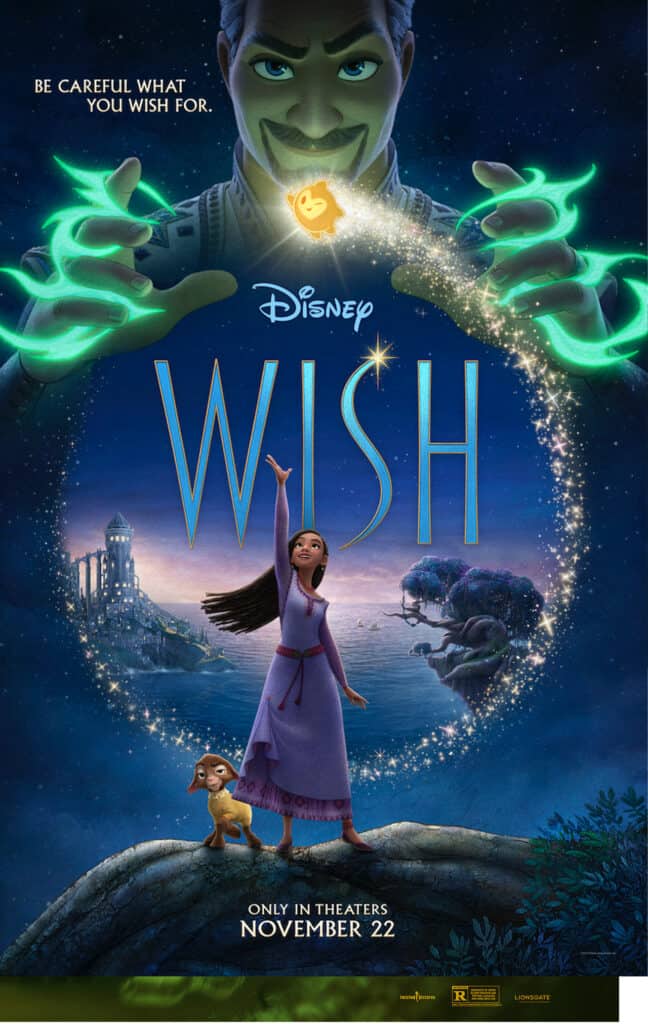


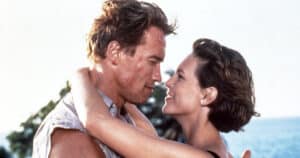
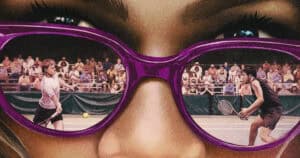
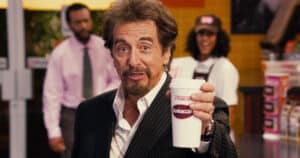
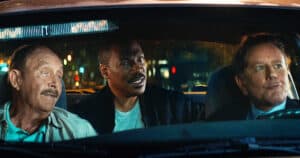
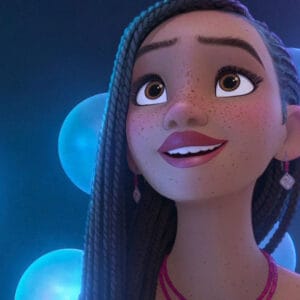
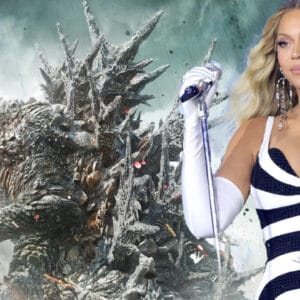
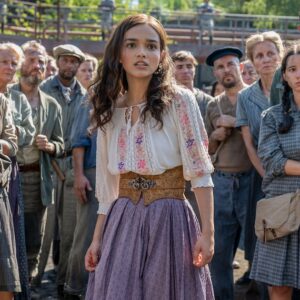
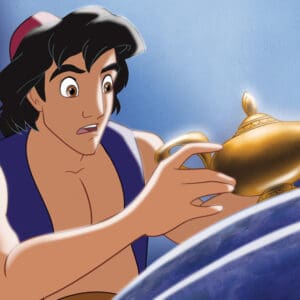

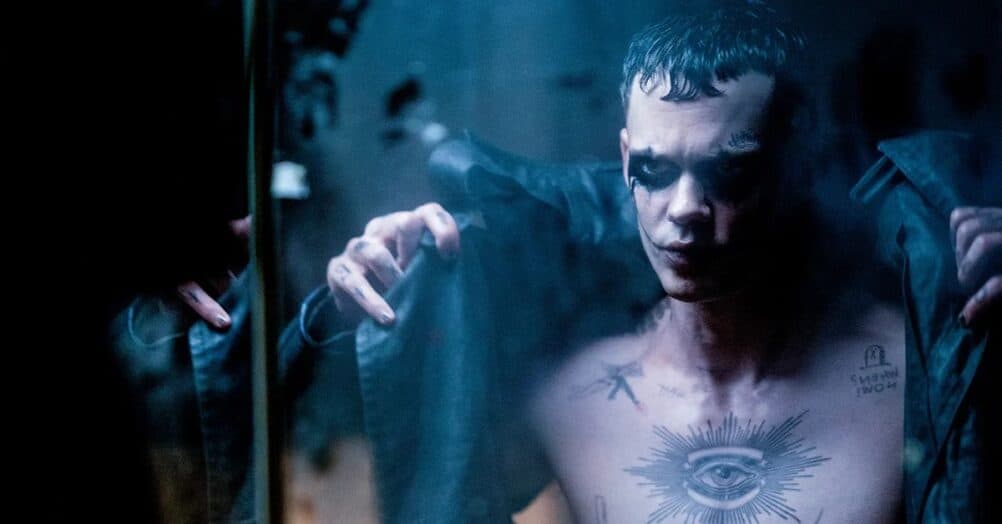
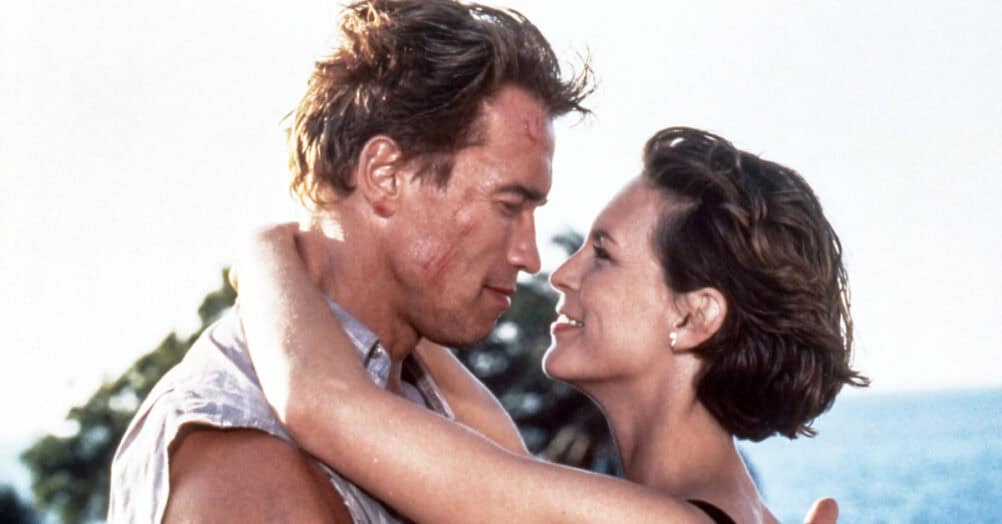
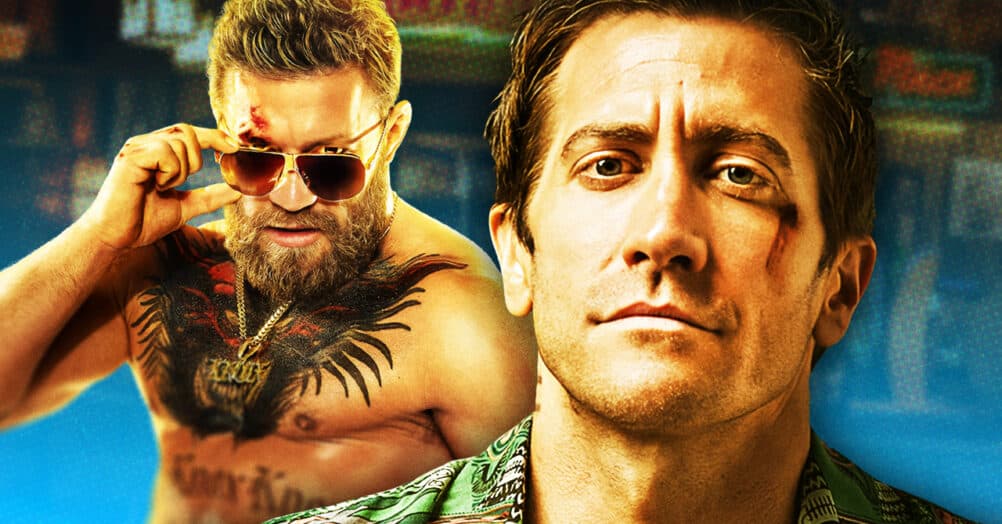
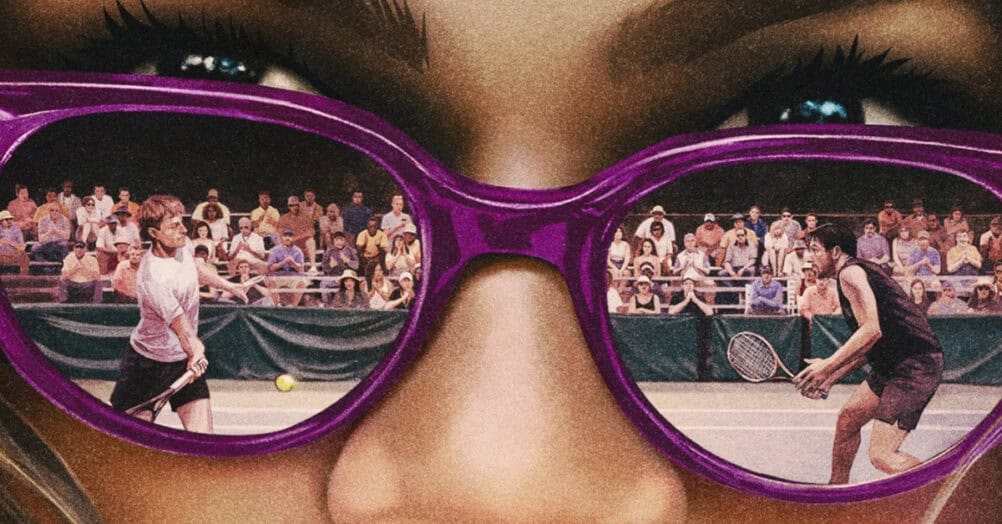
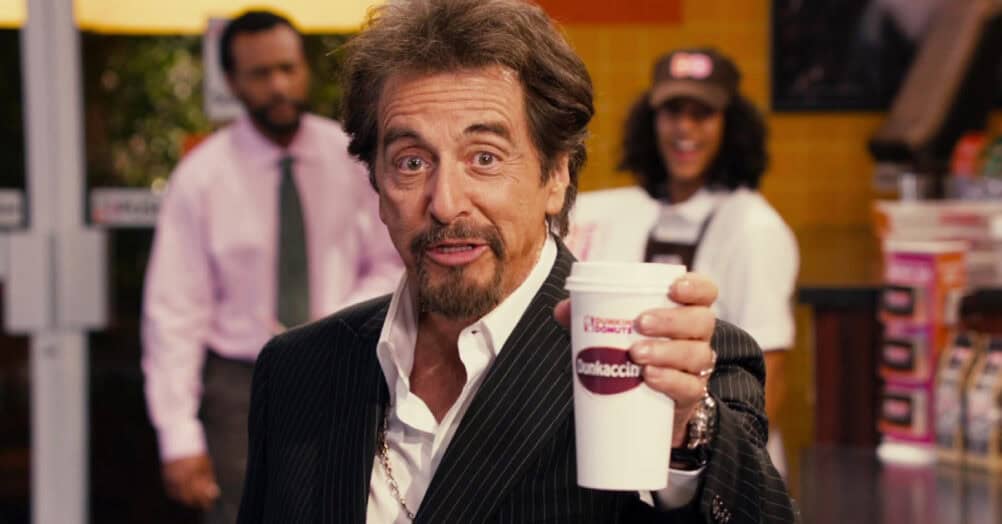
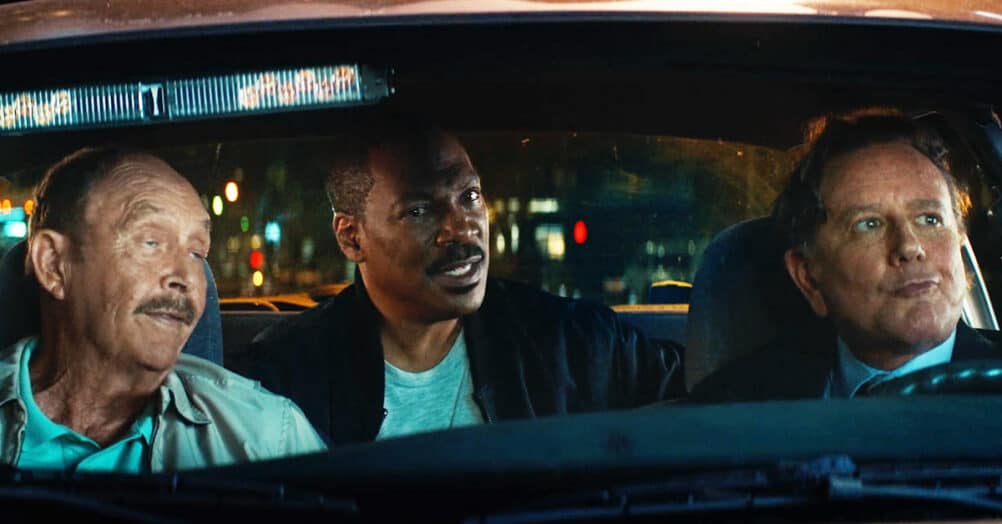
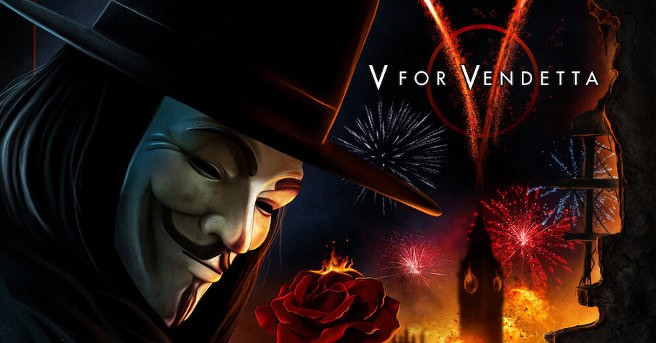
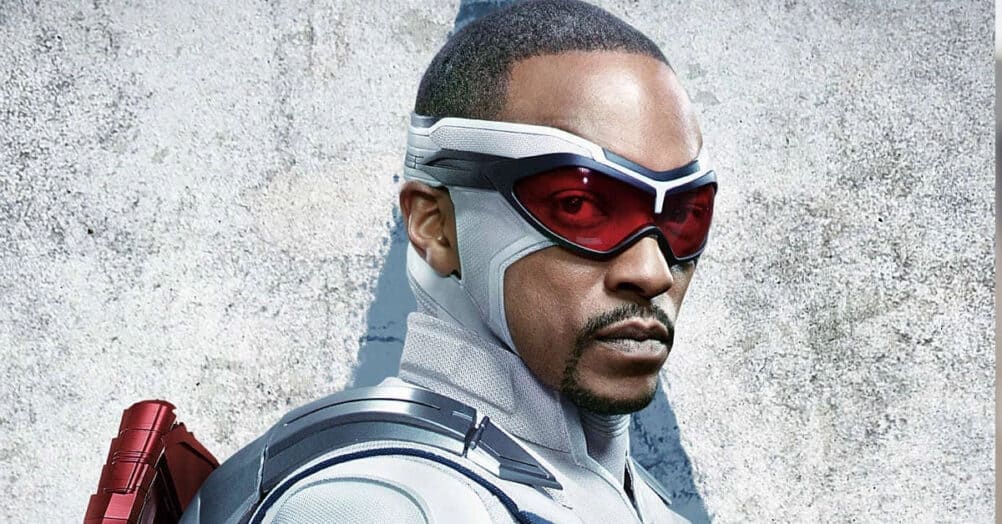
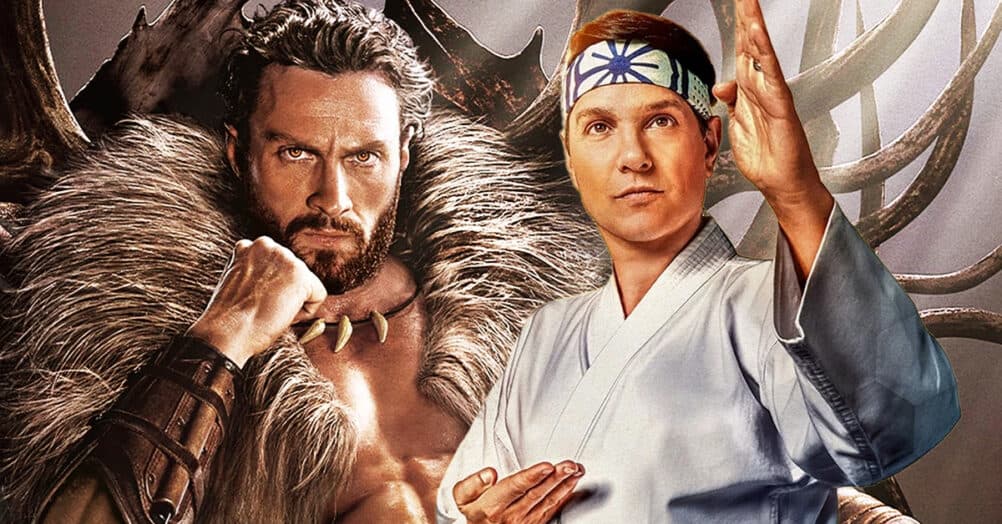
Follow the JOBLO MOVIE NETWORK
Follow us on YOUTUBE
Follow ARROW IN THE HEAD
Follow AITH on YOUTUBE